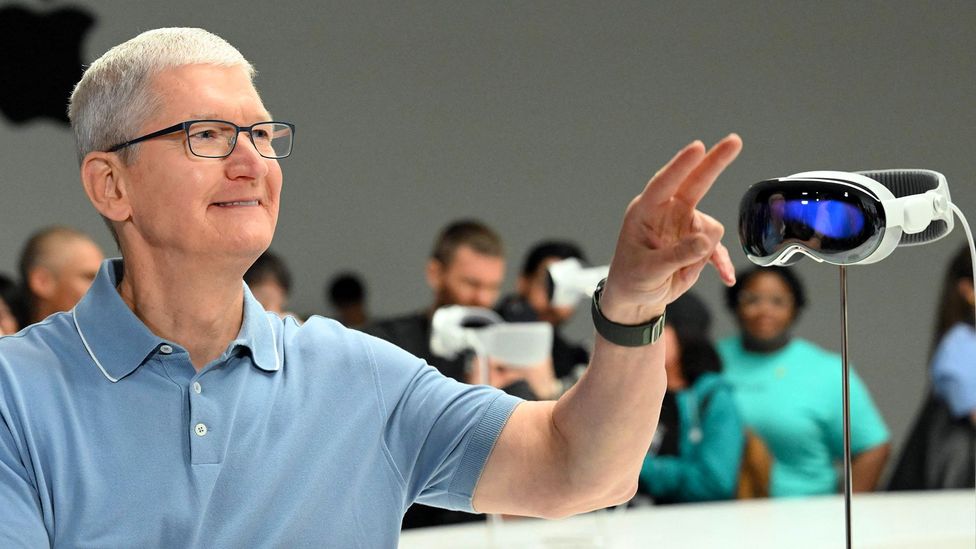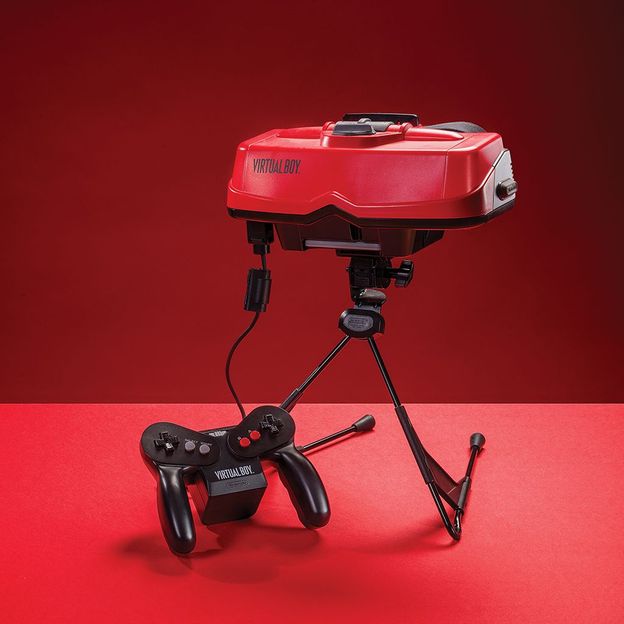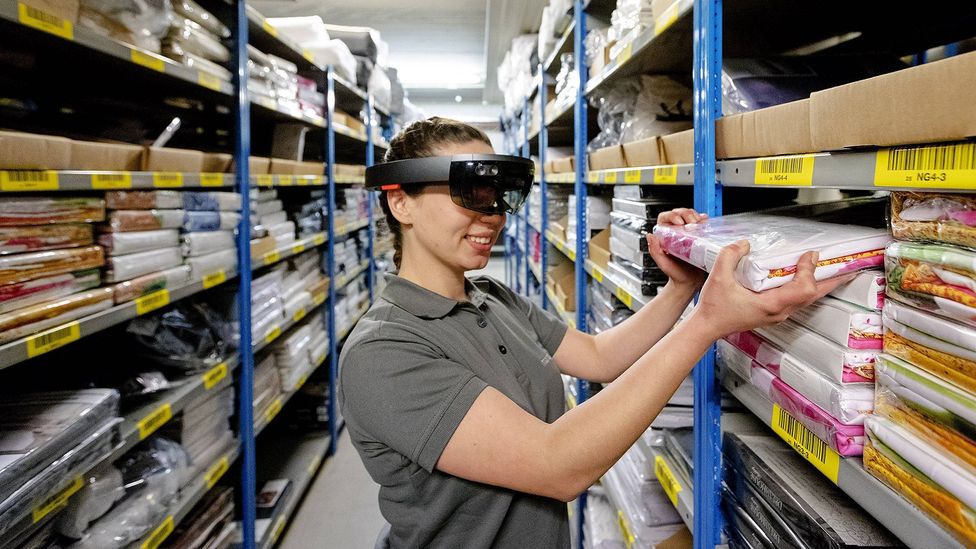

Apple Vision Pro: Can it really buck the trend of augmented reality flops?
source link: https://www.bbc.com/future/article/20230609-apple-vision-pro-can-it-really-buck-the-trend-of-augmented-reality-flops
Go to the source link to view the article. You can view the picture content, updated content and better typesetting reading experience. If the link is broken, please click the button below to view the snapshot at that time.
Apple Vision Pro: Can it really buck the trend of augmented reality flops?

Apple is best known for its game changing new product launches. The arrival of the iPod was instrumental in transforming how the world interacts and consumes music, while the launch of the iPhone marked the start of the smartphone era. It has also helped tablets and later smartwatches become must-have accessories thanks to the iPad and Apple Watch.
And this week's announcement that the company will sell a $3,499 (£2,800) mixed-reality headset, the Apple Vision Pro, from early next year, has been seen by some as a new iPhone moment.
The US technology giant's first foray into mixed-reality headsets – which it has termed "spatial computing" – has been seen by some as the impetus for a new revolution in wearable technology.
But can it really succeed where so many others have failed?
The history of mixed, virtual and augmented reality goggles is littered with the corpses of failed projects past. "We've seen a variety of augmented reality and virtual reality products that have been loudly hyped and failed to live up to their promise," says Mar Hicks, a historian of technology and professor at the Illinois Institute of Technology.
Much of the problem has been finding a use for this technology that people actually want, or even need. The immersive and interactivity augmented reality (AR) and virtual reality (VR) provide have tended to lend themselves most obviously to the gaming industry.
"For the past 20 or 30 years, or since the late 80s, or early 90s, there's been this vision about virtual reality," says Sylvia Pan, professor of virtual reality at Goldsmiths, University of London. Some attempts came to market, like Nintendo's Virtual Boy, which claimed to be able to present "stereoscopic" three dimensional (3D) graphics while playing games. But the Virtual Boy suffered from being too expensive, too clunky, and not effective enough. (A second attempt at "stereoscopic" 3D, through the company's 3DS handheld games console, was downplayed by the company when promoting the console.)
"There was a hype in the early 2000s, but it gradually came down," says Pan. In 2013, the excitement started once more with Oculus's Kickstarter campaign. OculusVR, a VR headset firm, was set up by Palmer Luckey, a retro game modder – tinkering with classic video games to inject new life into them.

Nintendo's Virtual Boy was one of the early attempts to bring virtual reality to a mass market (Credit: Getty Images)
As well as being a video game fan, Luckey was a tech obsessive. He amassed what he called the largest private collection of VR headsets in the world. By 16, he was making his own. Eventually, he felt confident one of his prototypes was good enough to make it to market. In August 2012, he launched a crowdfunding campaign under the OculusVR company umbrella.
The Kickstarter aimed to raise $250,000 (£160,200 at the time) in crowdfunding for the headset, which promised to bring an immersive gaming experience. In the end, it raised 10 times that amount.
Oculus was a rare success story in the early days of VR headsets' relatively recent history – so much so that it was bought by Facebook (now Meta) in March 2014 for $2bn (£1.2bn at the time). The acquisition of Oculus brought big tech into the game, and Meta continues to be a major player in the area as it builds a new virtual world called the metaverse.
But while Meta's move into VR appears to have helped the technology become more mainstream, the backing of a major technology company doesn't always mean success.
Ten years ago, Google launched Google Glass, its attempt at augmented reality. Glass wearers would see the world with a graphical layer of digital information atop their field of view. But the product flopped. The eyewear was considered unstylish, hard to use and many people objected to the built-in camera for users to record the world around them. Perhaps most unkindly of all, the most enthusiastic wearers came to be termed "glassholes".
Much AR technology struggles to connect with ordinary people or only connects for a fleeting moment – Mar Hicks
"I tried Google Glass for an extended period in 2013 and found the experience interesting, if primitive even by the standards of 2013," says Ernie Smith, a technology journalist and author of the Tedium newsletter, which tracks odd quirks and failed technology. "I think if Google released it today with more up-to-date technology, it would be more warmly received."
Two years after the release of Google Glass, another company, called Magic Leap, announced its own offering. Magic Leap was a hugely championed company, raising more in investment capital than any other company in the market in the past decade for its augmented reality glasses, which took three years to reach the market. When released in August 2018, Magic Leap had goals of selling 100,000 of its bug-eyed headsets in its first year. Six months after release, the company had reportedly sold just 6,000.
Part of the problem was the price of the gizmo – $2,300 (£1,800). But the headset also had its flaws – a limited field of view and questionable image quality. Even so, it was still considered to be a better offering than other AR headsets available at the time, such as Microsoft's Hololens.
The main issue was that consumers struggled to find meaningful uses for these devices that justified strapping them on.
Other, simpler approaches to AR were more successful. Pokemon GO, a smartphone game, released in 2016, normalised the idea of AR with a very specific deployment: cute cartoon characters would appear on your phone's screen as you looked at the real world through the camera on your device. Soon cities were filled with smartphone-wielding fans, and even on-duty police officers on occasion, chasing down the virtual characters, raising fears that it was increasing the incidence of fatal accidents on busy roads. Yet enthusiasm for the game soon fizzled out.
"Much AR technology struggles to connect with ordinary people or only connects for a fleeting moment, as a fad or a game," says Hicks. "Given the price point of Apple's offering, that's unlikely to change."
But Pan believes that two key developments in the underlying technology behind such glasses mean Apple stands a better chance of success now than it ever has before.
The tracking technology that figures out where the goggles wearer is in the world, and overlays the graphical interface in the right place, has advanced to the point of being able to do it in real-time, she says. And the graphics display technology has also sped up, meaning there's less lag between actions. (Apple claims its R1 computer chip embedded within the device can stream new images within 12 milliseconds – eight times faster than the blink of an eye.)
Yet there's still the problem of the gap between the reality and the hype – or hope – we have for how these devices will change our lives. "I think a big part of it comes down to the fact that often plays like these get sold as new ambitious experiences, which often sends them far afield to where modern-day use cases actually are," says Smith.
Smith reckons Apple presented the Vision Pro smartly by showing use cases for the device that echoed how people interact with computers, rather than pie-in-the-sky potential. Apple's own website shows people browsing the internet and watching a video without the need for screens. "Showing Excel might seem a little boring, but it sets a baseline for what this could be that doesn't aim for the rafters," he adds.

Microsoft's Hololens headset has enjoyed moderate sales by targetting specialist use markets in industry (Credit: Getty Images)
With its high price – which is nearly five times as much, when adjusted for inflation, as the first iPhone went on sale for in 2007 – Apple may still struggle to convince many users to try it. Some technology commentators suggest that Apple should target the first version of the Vision Pro at specialist users, such as architects, who could use the augmented reality to imagine what a building might look like in situ. Future generations of the device, when the price comes down thanks to technological advances, could be targeted more at mainstream users.
Aiming for a niche audience is the route that Apple's rivals Microsoft went down when it released its own mixed-reality headset, the Hololens, in 2016. It didn't set the world on fire, selling 300,000 devices since launch, according to analysts IDC. (For context, one analyst told the BBC that they believe Apple could sell upto 150,000 of its Vision Pro headsets in its first year on sale.)
However, what the Hololens lacks in quantity of users, it has made up for in the way it has tried to make itself useful. The technology is being used to aid surgeons conducting complicated procedures on the brain and to assist in bowel cancer surgery. It has found uses among engineering firms and recently Microsoft announced a $21.9bn (£15.9bn) deal to supply 120,000 headsets to the US Army.
But there have been some concerns raised by research that suggests augmented reality headsets may make complex tasks harder to complete than without any hi-tech help at all.
Even if Apple doesn't end up appearing in operating theatres worldwide, there's a surprising line in using AR and VR for training people to do tasks before they do them in real life. "There are lots of applications now using VR for training purposes," says Pan. Whether that's enough to sustain a business for Apple is still uncertain.
Apple is facing a lot of competition too with Magic Leap releasing a second iteration of its goggles last year and Microsoft's Hololens 2 already on sale. Google, however, announced in March this year that it was giving up on the latest Enterprise Edition of its Glass smart glasses, giving no indication the project will be revived.
"It will be interesting to see, a year or more after its introduction, if it has inspired copycats and novel user applications," says Hicks. "But at this point it looks like another iteration of a technology that has largely failed to catch on with most people."
For more technology news and insights, sign up to our Tech Decoded newsletter. The twice-weekly email decodes the biggest developments in global technology, with analysis from BBC correspondents around the world. Sign up for free here.
Recommend
About Joyk
Aggregate valuable and interesting links.
Joyk means Joy of geeK